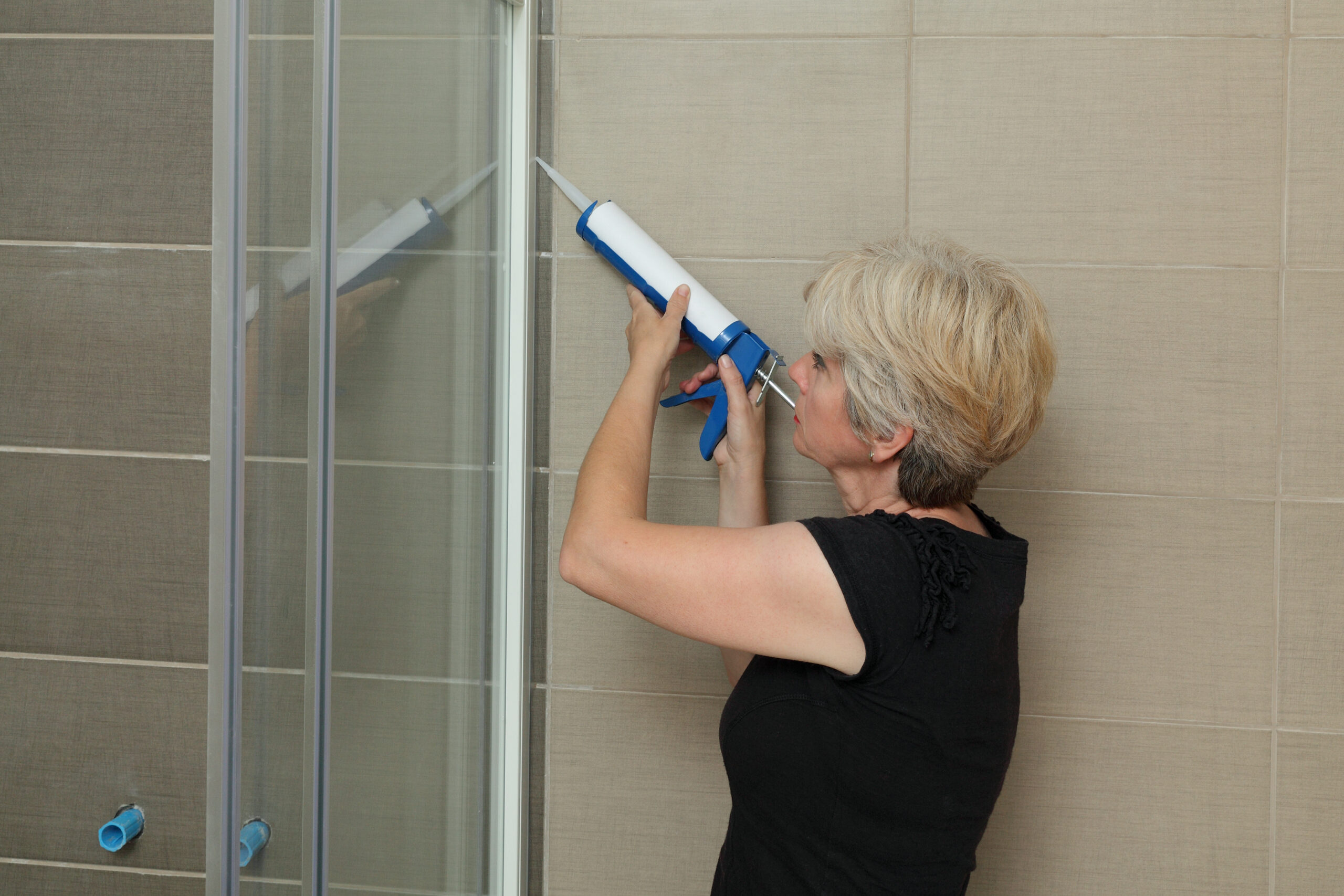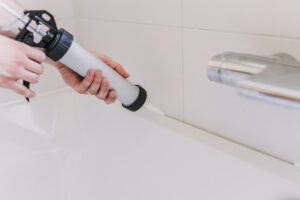
Water is an essential aspect of a properly functioning home, but when it’s not contained within the plumbing system, it can become a source of damage. This is especially common in bathrooms, where even unseen or ostensibly minor leaks can cause thousands of dollars’ worth of destruction. However, this type of water damage can often be easily prevented—all you need is a little time and a handful of materials. Read on to learn how to waterproof your bathroom.
Using caulk to waterproof your bathroom
You only need one material to seal your entire bathroom from water intrusion: caulk. Here are some basic guidelines for using caulk to waterproof your bathroom.
Use the correct type. There are different types of caulk for different applications, including both silicone- and latex-based products. Since latex-based caulk is susceptible to mold, you should always use a silicone-based caulk to waterproof your bathroom.
Use the correct tools and procedure. Follow these three steps for caulk application:
- Use a caulking gun (find one online or at your local hardware store) to apply a single bead of caulk along the gap that you want to seal.
- Trace the bead with your finger to push it into the gap.
- Using a slightly moist sponge or towel, wipe the caulk bead to smooth it out. You may need to repeat this step a few more times—just be sure to rinse the sponge between applications.
Reapply regularly. Waterproofing your bathroom isn’t a one-time task. Caulk isn’t permanent, so it’ll wear out over time. Inspect your bathroom fixtures annually, remove any caulk that looks worn out or is peeling off, and recaulk the area.
Where to waterproof your bathroom
Waterproofing your bathroom requires you to seal multiple areas and fixtures. Here are some crucial areas to address.
Shower
Seal all areas where the shower surround meets windows, walls, flooring and, if applicable, the tub. You should also seal all inner corners of the shower surround and any cracks in the tile grout. Even a hairline crack in the grout can let in a substantial amount of water, so take the time to identify any potential problem areas.

Caulking a bathtub is fairly simple – just start at one end and go all the way around.
Tub
Sealing a bathtub is easy—simply apply caulk to all edges that meet the wall or floor. When caulking the upper perimeter of your tub (where it meets the wall), start from one end and go in the same direction all the way around. Next, apply a single bead of caulk along the bottom of the tub where it meets the floor.
Toilet
Some people think that caulk should be applied around the base of the toilet, but this is actually a bad idea. Toilet leaks often occur at the base, so if your toilet is caulked there, you won’t know if there’s a leak, which will allow moisture to rot out the flooring beneath.
To prevent leaks at the base, your toilet should be level and firmly attached to the floor. This is easy to check for: just try to move it a little bit. If it wiggles, tighten the screws adhering it to the floor. If the floor is uneven, create a shim out of some wood or plastic to level it.
Keep in mind that toilets can also leak from the bottom of the tank or the supply line connection. Fortunately, toilet leaks can usually be repaired quite easily by replacing the compromised components. You just want to catch it before the water damages your wall or flooring.
Sink
Waterproofing a sink mainly consists of sealing the seam between the countertop splash guard and the wall. This will prevent water from getting behind the countertop and damaging the wall. Water damage around sinks can also occur from below, caused by leaky plumbing components like the p-trap or water supply lines. To prevent this, regularly open the cabinets below your sink and scan the area for signs of moisture.
By keeping an eye out for leaks and reapplying caulk on a regular basis, you’ll prevent costly water damage and maximize the longevity of your bathroom fixtures. However, if damage has already occurred, you’ll need to hire a quality contractor to repair the damage. Find a Diamond Certified water damage repair contractor in your area.
